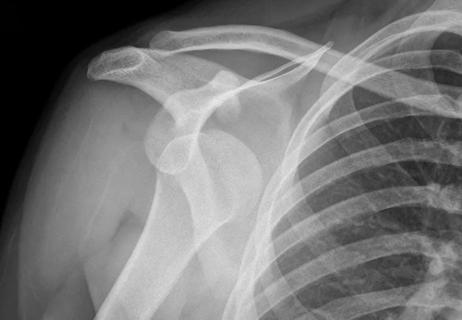Here's how to loosen up those tight shoulder muscles

Stiff muscles aren’t uncommon. After all, you’ve probably woken up in the morning and needed to have a good stretch to get going. Sitting for long periods of time can also lead to feeling achy and creaky. However, stiff muscles that persist can sometimes be a sign of something more serious.
Advertisement
Cleveland Clinic is a non-profit academic medical center. Advertising on our site helps support our mission. We do not endorse non-Cleveland Clinic products or services. Policy
One condition is frozen shoulder. As its name implies, this occurs when you start to lose range of motion in your shoulder, while experiencing pain that can affect your day-to-day life.
Frozen shoulder tends to come on gradually, but is fairly common. According to orthopaedic sports medicine specialist Vikas Patel, DO, about 3% to 5% of the population will have this condition at some point in their lives.
Doctors aren’t quite sure why people develop frozen shoulder, although they’ve found it’s common after a surgery where you need to immobilize your arm or use a sling, or might occur after an injury, like to your rotator cuff. People who have diabetes are also more prone to frozen shoulder.
Luckily, if you do develop this painful condition, there are multiple treatments available to help you regain motion, ranging from physical therapy to medical treatments or surgery.
One of the most common frozen shoulder treatments involves working with a physical therapist to loosen the shoulder capsule, a balloon-like element around your shoulder joint that shrinks when you have frozen shoulder.
“A physical therapist can help with what we call passive range of motion, where they help you move that arm and try to open up that capsule,” says Dr. Patel. “That’s one of the mainstays of our frozen shoulder treatment.”
Advertisement
Having regular physical therapy sessions is also helpful for putting together a regular exercise regimen. Here are three common frozen shoulder exercises to try.
Pick up a towel using your hand on the same side as your frozen shoulder. Gently lift your arm and bend your forearm back behind your head, as if you’re going to throw a ball. Keeping your upper arm as still as possible, move your forearm back and forth in a repetitive motion, like you’re hammering a nail into a wall.
You can also do this exercise with your arm in front of you. While still grasping a towel, move your arm in and out toward the center of your body, keeping your upper body still and your forearm at an angle.
With a pendulum exercise, dangle your arm with your frozen shoulder toward the ground so your fingers point downward. Then, move your arm in various ways: a circular motion, left and right to the side as if you are flapping a wing, or back and forth like a swing.
With an exercise Dr. Patel calls “climbing the wall,” you’ll put your arm in front of you and pretend like you’re trying to scale a wall (or maybe a mountainside). Pretend you’re trying to grasp a ledge, and reach up higher and higher every few times, so you’re lifting your arm above your head by the end.
Dr. Patel stresses that it’s important to be diligent about keeping up with these exercises. “It’s very important that no matter what kind of treatment is done for frozen shoulder, home exercises are key,” he says. “Doing these one time, once a week, or even once every couple weeks in physical therapy with the physical therapist is just not enough. You have to be good about doing them at home as well.”
Frozen shoulder can be cured, although the length of time it takes to see results varies. “If we do catch frozen shoulder earlier on, it’s a little bit easier to open up,” says Dr. Patel. “If we leave frozen shoulder alone, it can take two, three years. With treatments, we can expedite that to maybe months or a year.”
However, when embarking on a regimen of frozen shoulder treatment, it’s important to keep at it until you get the all-clear from your doctor and physical therapist. Don’t just stop when the pain eases.
“My recommendation is always to continue with all of your treatments as long as we need to until the pain is gone and the range of motion is back to near completely normal,” says Dr. Patel. “Usually the pain will go away quicker than the range of motion will come back. Keeping up with therapy exercises is a super-important part of improving range of motion.”
Advertisement
Learn more about our editorial process.
Advertisement

Don’t ignore obvious warning signs of more serious shoulder issues

Stretching and eliminating stresses on the joint is key to stopping the pain

Sometimes, it does require surgery

The short answer from an orthopaedic surgeon

How to tell the difference

Plus, ways to keep your bones healthy and strong!

Bone health starts with proper nutrition, exercise and healthy lifestyle choices

Getting stronger, feeling better and staying active isn’t just possible — it’s doable

If you’re feeling short of breath, sleep can be tough — propping yourself up or sleeping on your side may help

If you fear the unknown or find yourself needing reassurance often, you may identify with this attachment style

If you’re looking to boost your gut health, it’s better to get fiber from whole foods